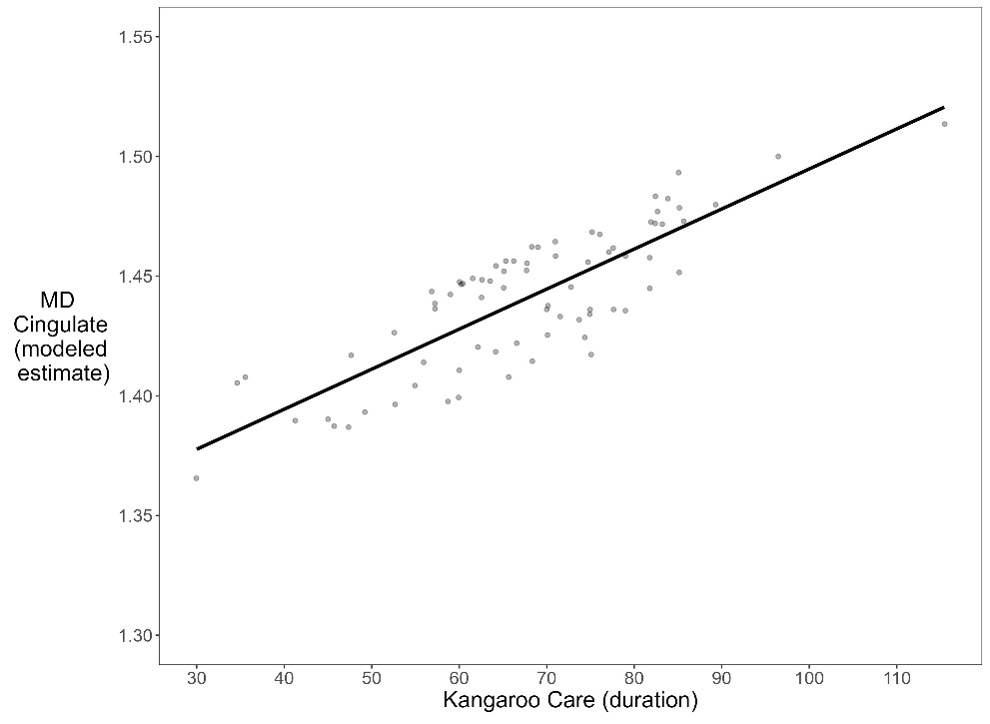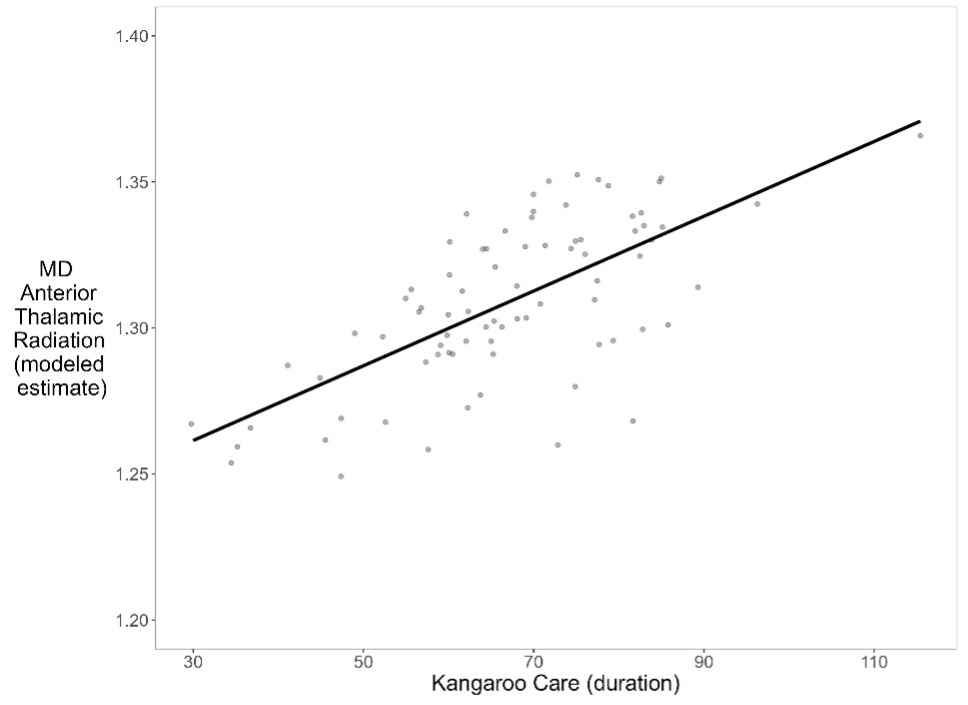Neonatal Neurology: Clinical Research
Neonatal Neurology 5: Clinical
116 - Relations between kangaroo care and neonatal white matter connectivity in infants born very preterm
Publication Number: 116.337

Katherine Travis, PhD (she/her/hers)
Assistant Professor
Stanford University School of Medicine
Palo Alto, California, United States
Presenting Author(s)
Background: Kangaroo Care (KC), or skin-to-skin care, is a developmental care method beneficial to health outcomes in preterm infants. Children born very preterm (VPT < 32 weeks gestational age (GA)) are at-risk for white matter injuries and abnormal white matter development. Aberrant white matter development is linked to adverse neurodevelopmental outcomes in VPT children. KC is often encouraged in the neonatal intensive care unit as a neuroprotective strategy, yet evidence linking hospital-based KC practices to neonatal structural brain development is limited.
Objective:
The present study examined relations between KC and brain white matter connectivity from near-term diffusion MRI (dMRI) scans.
Design/Methods: We performed a retrospective cohort study of male and female VPT infants (N=124). Infants underwent diffusion MRI scanning prior to hospital discharge as part of the standardized near-term imaging protocol. Post-menstrual age (PMA) at scan was 34.4 - 41.2 weeks. White matter connectivity was assessed with mean diffusivity (MD) and fractional anisotropy (FA) measured from four fronto-limbic white matter tracts (superior frontal corpus callosum (CC), cingulate, anterior thalamic radiation, uncinate). Medical staff recorded daily minutes of parent administered KC in the electronic medical record. We expressed KC as duration (minutes of KC / instance). We performed hierarchical linear regressions to assess the unique contribution of KC to white matter connectivity of each pathway after controlling for GA, socio-economic status (SES), health acuity and PMA at scan.
Results: KC predicted cingulate and anterior thalamic radiation mean MD over and above GA, SES, health acuity, and PMA at scan (Cingulate mean MD full model: F=3.06, p=0.015, r2=0.18; KC unique contribution: r2 change=0.09, p=0.008; Anterior thalamic radiation full model: F=1.66, p=0.15, r2=0.10; KC unique contribution: r2 change=0.08, p=0.013). KC did not predict superior frontal CC or uncinate mean MD or mean FA from any of these tracts.
Conclusion(s):
Variations white matter brain development in VPT infants related to how much KC infants experienced during hospitalization. These associations suggest that the experience of KC may be a unique contributor to fronto-limbic white matter connectivity. These findings also indicate that longer durations of KC instances beyond the minimum recommended time of 60-90 minutes may be important for brain development. Ongoing analyses will explore whether fronto-limbic white matter connectivity mediates relations between KC and long-term neurodevelopmental outcomes. 

